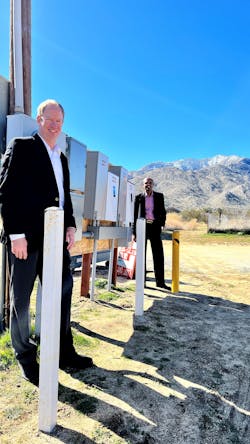Flip Side of the Microgrid: SDG&E Deploys Virtual Power Plant To Offset Summer Peak Demand
San Diego Gas & Electric (SDG&E) is piloting a virtual power plant (VPP) project to deploy aggregated distributed energy resources (DERs) in the grid when the summer temperature soars and electricity demand rises.
Virtual power plants and microgrids are almost like opposite sides of the same coin. They both utilize DERs, such as rooftop solar and battery storage, to shore up power resiliency independent of/or in support of the centralized grid, offer demand respond services, and store energy.
A microgrid is a physical combination of resources connected together on-site that can be islanded from the main grid to keep power running at mission critical facilities. A VPP is not a physical plant, but rather a software-driven aggregation of DERs coordinated to deploy energy back into the main grid.
Innovative Virtual Power Plant Projects are Fascinating and Initiate Great Discussions
Microgrid 2024: A Revolution in Energy
SDG&E deployed its VPP pilot three times this month as temperatures rose and peak demand challenged grid capacity. Essentially, electricity output is collected from the DERs and utilized to help maintain grid resiliency.
“The beauty of a virtual power plant is it can leverage existing resources to provide significant grid reliability benefits—with zero incremental emissions,” Miguel Romero, Chief Commercial Officer for SDG&E, said in a statement. “When hundreds or thousands of businesses or homes are connected to a VPP and their resources are flexibly managed to charge or discharge electrons, they can help keep the lights on during hot summer days.”
Large grid system operators, such as California’s ISO or the Electric Reliability Council of Texas (ERCOT), are often under duress in weather extremes to provide power when customer demand is historically high. In June and July, ERCOT issued warnings on available grid capacity after setting new records of more than 81 GW (81,000 MW) in peak demand.
Recently, the Public Utilities Commission of Texas approved two pilot VPP projects in the ERCOT-operated grid.
In San Diego, the utility VPP project is unique because it includes several devices in the aggregated energy mix. This includes rooftop solar, smart thermostats, well water controllers, and battery energy storage systems.
The SDG&E VPP pilot is focused on the remote Shelter Valley community in eastern San Diego County. Among the participants include single-family homes with existing rooftop solar and the Shelter Valley Community Center, which had two batteries installed for free on-site.
“We can use this equipment to maintain a place for people if the power goes off and keep the center cool and hope we can provide food if needed for community residents,” Shelter Valley Community Center Board President Steve Bassett said in the SDG&E release.
VPP participants receive a message about the possibility that their devices will either be turned off (to reduce demand) or discharge electricity in support of the grid. For certain devices, they have the option to opt out of this, unless it’s battery storage, according to the utility.
SDG&E has tested the VPP 17 times through simulated demand response events. The pilot came online late last year and will run through December 2023.
In recent years, SDG&E has also been involved in implementing numerous microgrid projects.
Stay up to date on the latest microgrid news. Subscribe to the free Microgrid Knowledge Newsletter.
About the Author
Rod Walton, Microgrid Knowledge Head of Content
Managing Editor
For Microgrid Knowledge editorial inquiries, please contact Managing Editor Rod Walton at [email protected].
I’ve spent the last 15 years covering the energy industry as a newspaper and trade journalist. I was an energy writer and business editor at the Tulsa World before moving to business-to-business media at PennWell Publishing, which later became Clarion Events, where I covered the electric power industry. I joined Endeavor Business Media in November 2021 to help launch EnergyTech, one of the company’s newest media brands. I joined Microgrid Knowledge in July 2023.
I earned my Bachelors degree in journalism from the University of Oklahoma. My career stops include the Moore American, Bartlesville Examiner-Enterprise, Wagoner Tribune and Tulsa World, all in Oklahoma . I have been married to Laura for the past 33-plus years and we have four children and one adorable granddaughter. We want the energy transition to make their lives better in the future.
Microgrid Knowledge and EnergyTech are focused on the mission critical and large-scale energy users and their sustainability and resiliency goals. These include the commercial and industrial sectors, as well as the military, universities, data centers and microgrids. The C&I sectors together account for close to 30 percent of greenhouse gas emissions in the U.S.
Many large-scale energy users such as Fortune 500 companies, and mission-critical users such as military bases, universities, healthcare facilities, public safety and data centers, shifting their energy priorities to reach net-zero carbon goals within the coming decades. These include plans for renewable energy power purchase agreements, but also on-site resiliency projects such as microgrids, combined heat and power, rooftop solar, energy storage, digitalization and building efficiency upgrades.

